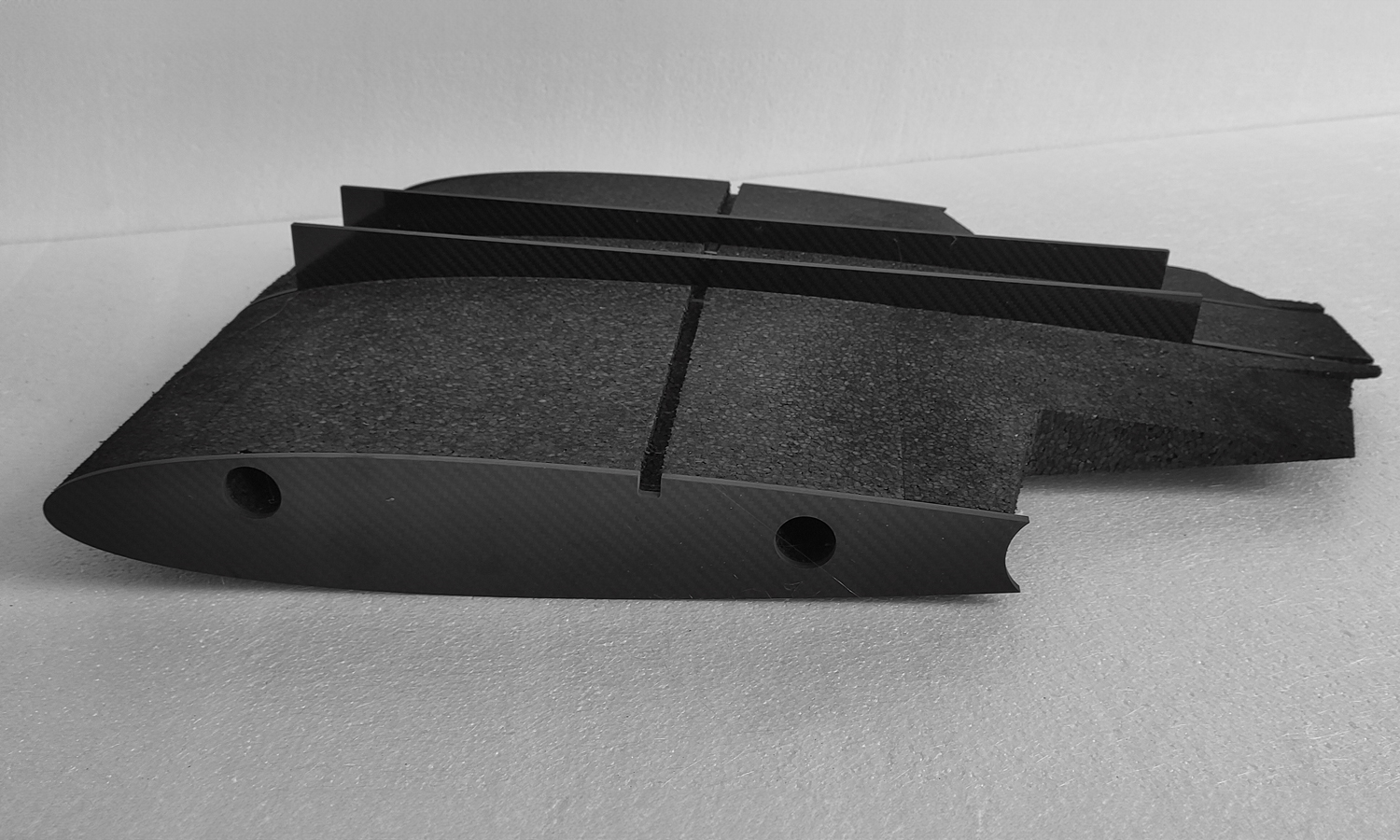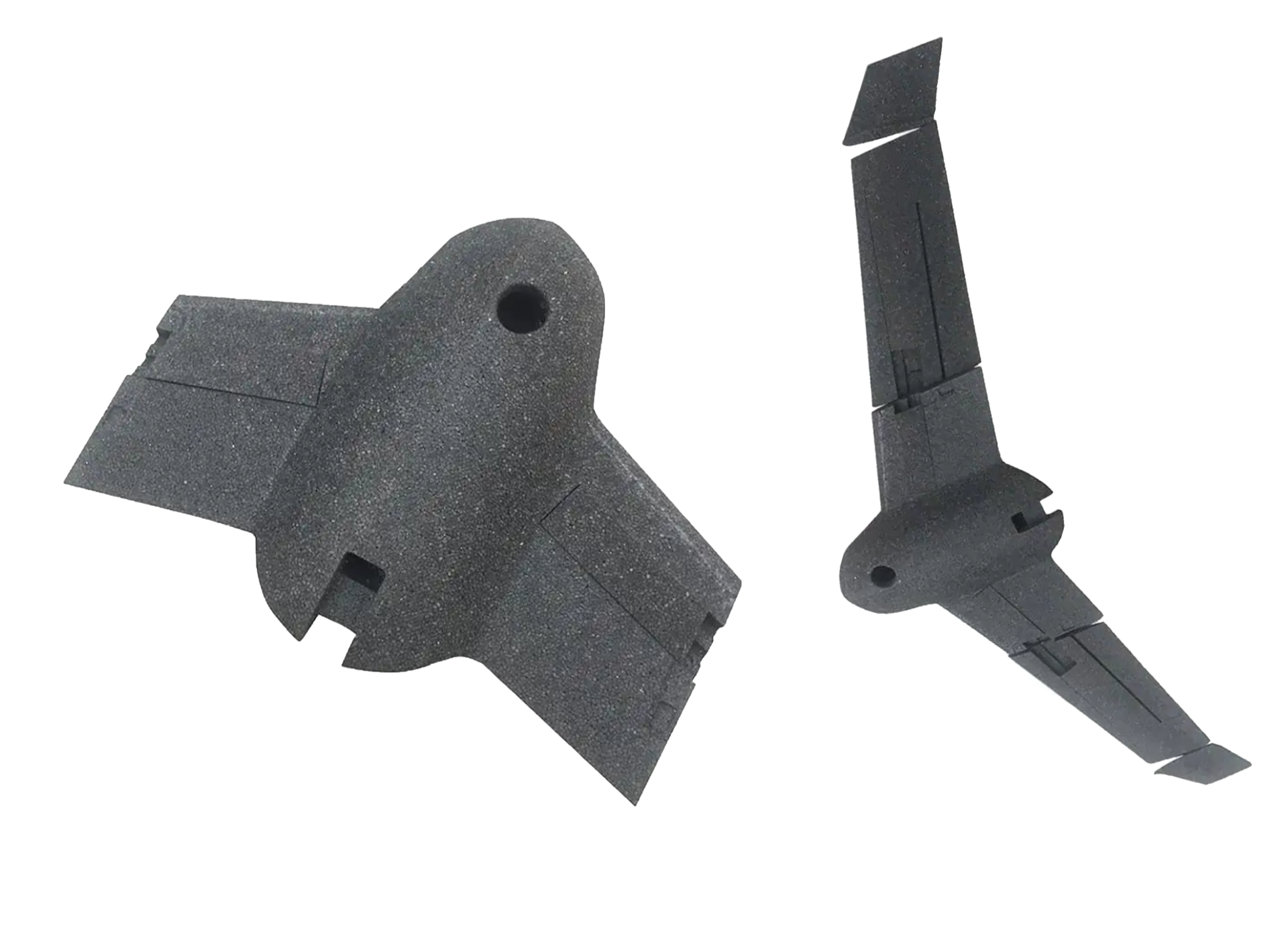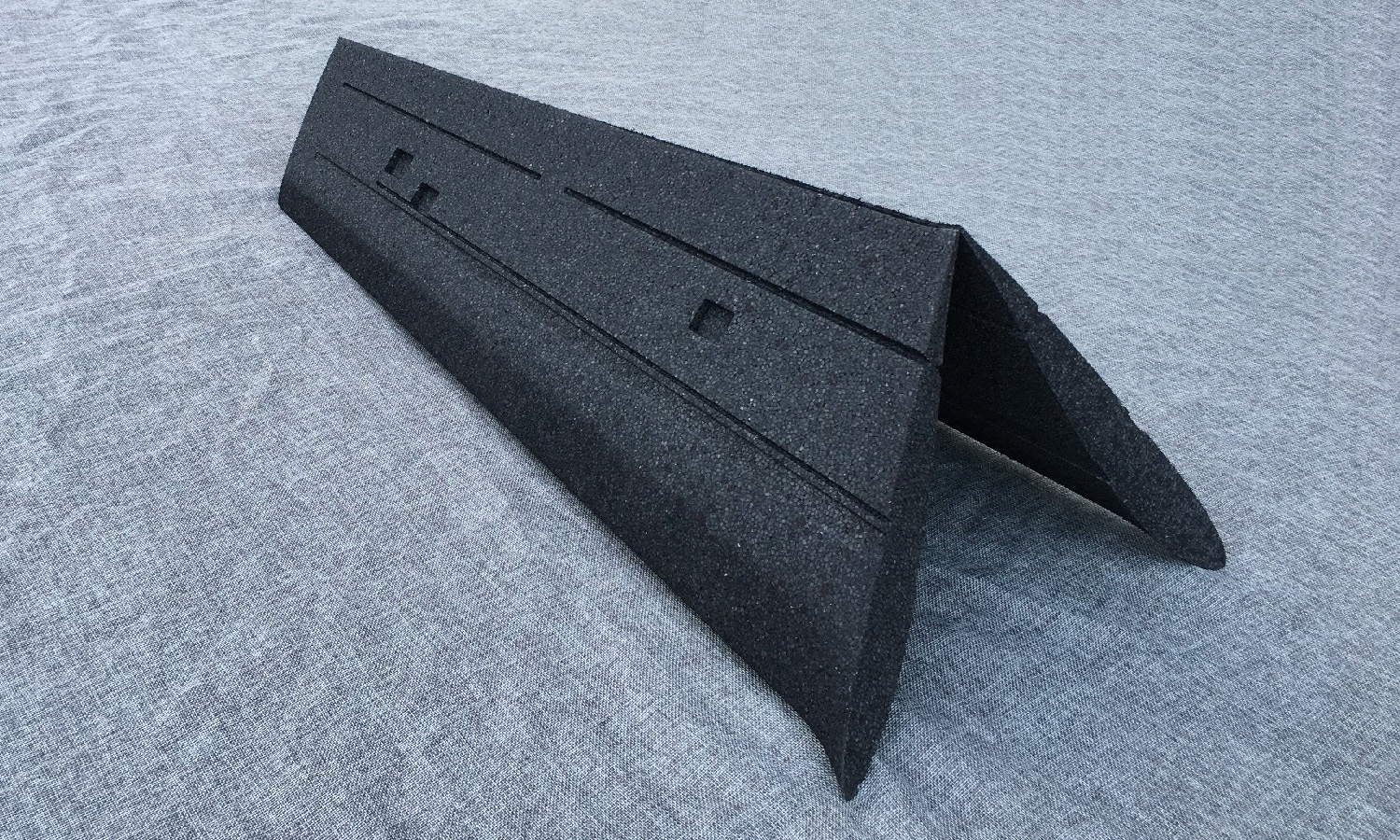

During prototyping, the proposed design will typically be produced using a CNC (computer numerical control) machine to cut and shape the . This CNC method allows for easy shaping and milling and can be done from CAD data to create a tangible product allowing for fast, accurate prototyping. Repeated analysis of incremental modifications can be carried out over time to achieve the desired final product.

Example: (Take epp Foam aircraft as an example)
Solution
Stage 1: Dimensional Acquisition and Digital Blueprint Integration. The initial step involves precise measurement of the EPP block using calibrated calipers. This crucial data ensures seamless compatibility with the chosen wing design. Subsequently, the client-provided blueprint, a digital map of the desired aerodynamic properties, is uploaded to the 5-axis CNC machine. This acts as the guiding script for the subsequent sculpting process.
Stage 2: CNC-Sculpted Aerodynamic Form. Guided by the digital blueprint, the CNC machine wields a custom-designed end mill with surgical precision. Millimeter by millimeter, the EPP surrenders to the programmed commands, revealing the meticulously contoured wing profile. This stage births the core aerodynamic features – the symmetrical airfoil for efficient lift generation, the dihedral angle for inherent roll stability, and the washout angle for stall prevention at high angles of attack.

Stage 3: Surface Perfection and Optional Structural Reinforcement. Skilled technicians meticulously hand-sand the sculpted wing to achieve a pristine, aerodynamically optimized surface. This minimizes drag and maximizes glide performance. Optionally, for enhanced strength and rigidity, a laser-cut carbon fiber skeleton, precisely tailored to the client’s specifications, is bonded to the EPP core using aerospace-grade epoxy. This creates a lightweight yet robust framework, ideal for demanding flight conditions.
Stage 4: Rigorous Quality Control and Flight-Readiness Assessment. The completed wing undergoes a comprehensive quality control inspection. Every detail, from dimensional accuracy to surface finish, is scrutinized against Qing dao Simingrui Precise Technology Co . Ltd.s uncompromising standards. Only wings passing this rigorous examination are deemed worthy of gracing the skies.

During prototyping, the proposed design will typically be produced using a CNC (computer numerical control) machine to cut and shape the . This CNC method allows for easy shaping and milling and can be done from CAD data to create a tangible product allowing for fast, accurate prototyping. Repeated analysis of incremental modifications can be carried out over time to achieve the desired final product.

Example: (Take epp Foam aircraft as an example)
Solution
Stage 1: Dimensional Acquisition and Digital Blueprint Integration. The initial step involves precise measurement of the EPP block using calibrated calipers. This crucial data ensures seamless compatibility with the chosen wing design. Subsequently, the client-provided blueprint, a digital map of the desired aerodynamic properties, is uploaded to the 5-axis CNC machine. This acts as the guiding script for the subsequent sculpting process.
Stage 2: CNC-Sculpted Aerodynamic Form. Guided by the digital blueprint, the CNC machine wields a custom-designed end mill with surgical precision. Millimeter by millimeter, the EPP surrenders to the programmed commands, revealing the meticulously contoured wing profile. This stage births the core aerodynamic features – the symmetrical airfoil for efficient lift generation, the dihedral angle for inherent roll stability, and the washout angle for stall prevention at high angles of attack.

Stage 3: Surface Perfection and Optional Structural Reinforcement. Skilled technicians meticulously hand-sand the sculpted wing to achieve a pristine, aerodynamically optimized surface. This minimizes drag and maximizes glide performance. Optionally, for enhanced strength and rigidity, a laser-cut carbon fiber skeleton, precisely tailored to the client’s specifications, is bonded to the EPP core using aerospace-grade epoxy. This creates a lightweight yet robust framework, ideal for demanding flight conditions.
Stage 4: Rigorous Quality Control and Flight-Readiness Assessment. The completed wing undergoes a comprehensive quality control inspection. Every detail, from dimensional accuracy to surface finish, is scrutinized against Qing dao Simingrui Precise Technology Co . Ltd.s uncompromising standards. Only wings passing this rigorous examination are deemed worthy of gracing the skies.
